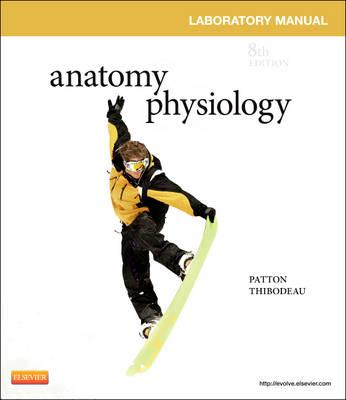Overview
Develop your skills in dissection and identification with 55 different exercises for the lab. Featuring full-color examples of commonly encountered histology and dissection specimens, this laboratory manual is a perfect sample portfolio of different styles to emulate and expand on while learning body systems and their functions. Exercises include labeling of anatomy, dissection of anatomic models and fresh or preserved specimens, physiological experiments, and computerized experiments.
Full Product Details
Author: Dr. Kevin T. Patton, Ph.D.
Publisher: Elsevier - Health Sciences Division
Imprint: Mosby
Edition: 8th Revised edition
Dimensions:
Width: 21.60cm
, Height: 2.30cm
, Length: 27.60cm
Weight: 1.157kg
ISBN: 9780323083607
ISBN 10: 0323083609
Pages: 528
Publication Date: 30 May 2012
Audience:
College/higher education
,
Tertiary & Higher Education
Format: Paperback
Publisher's Status: Out of Print
Availability: Out of stock

Reviews
This is a working textbook, which enables its reader to enhance their anatomical and physiological skills. Its methodology incorporates structure, function and control. Although this is a laboratory book, it can be used in non-laboratory settings too thereby broadening its usability. It is readable with clear goals set for learning. As the learning develops for human anatomy there is inclusion of animal anatomy and physiology with graphics included of some animal dissections...It should also be considered by members of the health care professions who wish to revise or enhance their working knowledge of anatomical structures, scientific methods of analysis and relevant terminology. Nursing Times, April 2013
This is a working textbook, which enables its reader to enhance their anatomical and physiological skills. Its methodology incorporates structure, function and control. Although this is a laboratory book, it can be used in non-laboratory settings too thereby broadening its usability. It is readable with clear goals set for learning. As the learning develops for human anatomy there is inclusion of animal anatomy and physiology with graphics included of some animal dissections...It should also be considered by members of the health care professions who wish to revise or enhance their working knowledge of anatomical structures, scientific methods of analysis and relevant terminology. Nursing Times, April 2013
-This is a working textbook, which enables its reader to enhance their anatomical and physiological skills. Its methodology incorporates structure, function and control. Although this is a laboratory book, it can be used in non-laboratory settings too thereby broadening its usability. It is readable with clear goals set for learning. As the learning develops for human anatomy there is inclusion of animal anatomy and physiology with graphics included of some animal dissections...It should also be considered by members of the health care professions who wish to revise or enhance their working knowledge of anatomical structures, scientific methods of analysis and relevant terminology.- Nursing Times, April 2013 This is a working textbook, which enables its reader to enhance their anatomical and physiological skills. Its methodology incorporates structure, function and control. Although this is a laboratory book, it can be used in non-laboratory settings too thereby broadening its usability. It is readable with clear goals set for learning. As the learning develops for human anatomy there is inclusion of animal anatomy and physiology with graphics included of some animal dissections...It should also be considered by members of the health care professions who wish to revise or enhance their working knowledge of anatomical structures, scientific methods of analysis and relevant terminology. Nursing Times, April 2013 This is a working textbook, which enables its reader to enhance their anatomical and physiological skills. Its methodology incorporates structure, function and control. Although this is a laboratory book, it can be used in non-laboratory settings too thereby broadening its usability. It is readable with clear goals set for learning. As the learning develops for human anatomy there is inclusion of animal anatomy and physiology with graphics included of some animal dissections...It should also be considered by members of the health care professions who wish to revise or enhance their working knowledge of anatomical structures, scientific methods of analysis and relevant terminology. Nursing Times, April 2013
<p> This is a working textbook, which enables its reader to enhance their anatomical and physiological skills. Its methodology incorporates structure, function and control. Although this is a laboratory book, it can be used in non-laboratory settings too thereby broadening its usability. It is readable with clear goals set for learning. As the learning develops for human anatomy there is inclusion of animal anatomy and physiology with graphics included of some animal dissections...It should also be considered by members of the health care professions who wish to revise or enhance their working knowledge of anatomical structures, scientific methods of analysis and relevant terminology. <p>Nursing Times, April 2013




